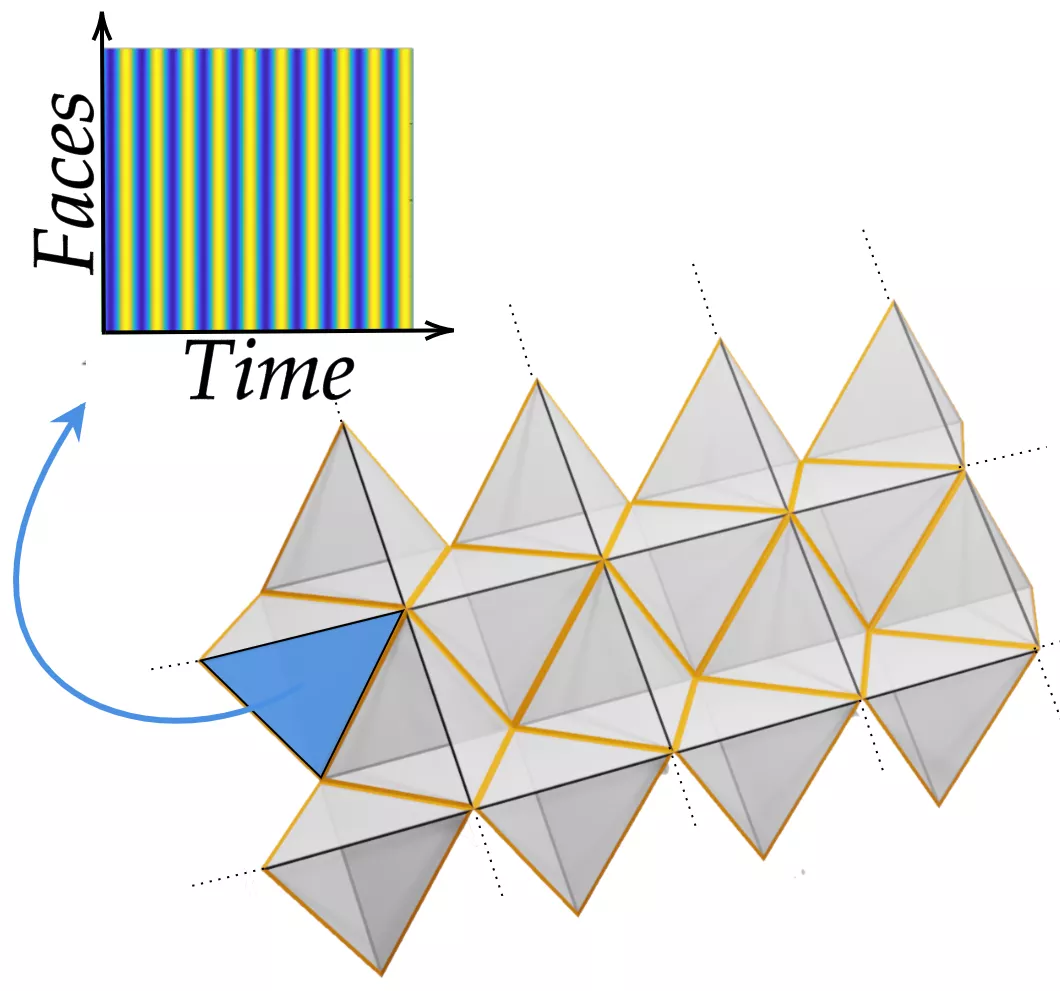In the 1950s, the English mathematician Alan Turing created a mathematical model to provide a possible explanation for the emergence of regular patterns on animal skin. The idea was translated into chemical reactions: when certain reactions occur, the products separate spatially, and spots of regular colour and shape appear.
This phenomenon is the result of a series of interaction mechanisms localised in certain areas of space that lead the system towards a synchronous state. When currents, flows or dynamic variables associated with groups of more than two interacting elements are present, the situation is considerably more complex, and synchronisation can be trickier to achieve. This was demonstrated by researchers Timoteo Carletti (University of Namur), Lorenzo Giambagli (University of Florence and Namur) and Ginestra Bianconi (Queen Mary University of London) in a study published in May 2023 in the prestigious Physical Review Letters.
To characterise the possibility of achieving a synchronised state, it is necessary to represent the system in question. Interacting elements are represented by points, called nodes, while the presence of a certain form of interaction is described by a connection between the two nodes, called a link, forming a network.
In nature, however, interactions may not be limited to individual elements, but rather to quantities associated with groups of two, three or more agents. Consider, for example, the signals on the synapses that link two neurons. Being defined on the connection structure between the two nodes, it is natural to associate a signal of this type with the link in the network, the synapse, which represents the system of neurons and not just with the neurons themselves.
This concept can be extended to higher-order structures, so that we can also consider, for example, signals involving interaction between three entities, represented by the addition of solid triangles to the network, and so on.

In this way, we obtain complex geometric structures such as the one shown in the figure, known as simplicial complexes or cell complexes.
"Using mathematical tools derived from algebraic topology, it has been possible to predict the realisation or non-realisation of synchronous states involving all these different classes of signals", conclude the authors. "With this study we have highlighted the determining role of the global characteristics of the interaction structure that characterises the system (the simplicial complex). In fact, it is the topological characteristics such as holes or cavities that enable the global synchronisation of signals to be achieved or not."
Some examples of synchronisation
1. A concert hall
At the end of the show, everyone applauds at their own pace. But human beings tend to follow their neighbours, listening and observing them. As a result, the applause gradually comes together to form a single clap. This is known as time synchronisation.
2. Fireflies
To attract females, male fireflies emit flashes of light. By synchronising naturally, fireflies can produce a large quantity of light at the same time, attracting more females. This is known as space-time synchronisation.